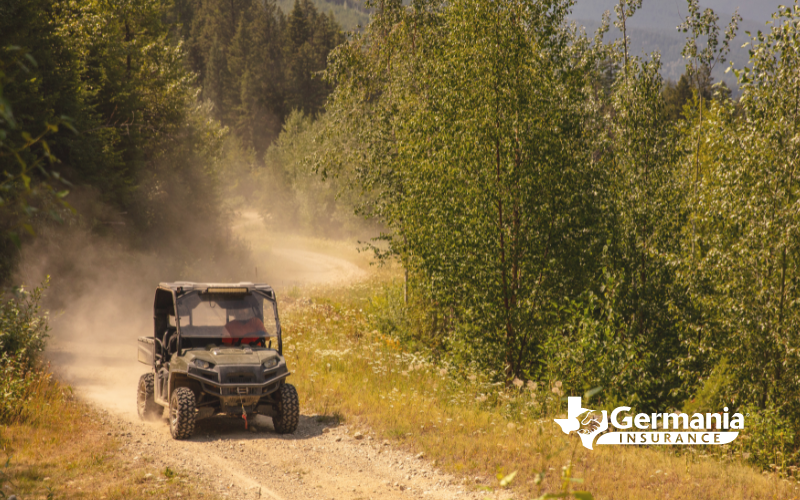Navigate Texas ATV regulations with precision. Our blog serves as your guide, demystifying road usage rules.

In the sprawling state of Texas, All-Terrain Vehicles (ATVs) and similar off-road vehicles are a common sight. They serve a multitude of purposes, from recreational use to utility work. However, the legality of driving these vehicles on public roads remains a topic of confusion for many. This article delves into the regulations surrounding ATV road usage in Texas, dissecting complex legal jargon, and presenting the information in a digestible format.
Defining ATVs and Similar Vehicles
Before diving into the laws, it's crucial to understand what constitutes an ATV or similar off-highway vehicle (OHV) in Texas. The state classifies these vehicles into three broad categories:
1. All-Terrain Vehicle (ATV): A motor vehicle that has a seat or seats for the rider and one passenger, three or more tires, is not more than 50 inches wide, and is designed for off-highway use. It's not manufactured for farm or lawn care.
2. Recreational Off-Highway Vehicle (ROV): Similar to an ATV, an ROV, however, has four or more tires and can accommodate the rider and one or more passengers.
3. Utility Vehicle (UTV): A UTV is characterized by its side-by-side seating for the operator and passenger, four or more tires, and a design intended for off-highway use. Unlike ATVs and ROVs, it's designed by the manufacturer for utility work, not recreational purposes.
ATV Road Use in Texas: The General Rule
In Texas, the general rule is that ATVs, ROVs, and UTVs are not eligible for registration as regular street-legal vehicles. These vehicles are primarily designed for off-highway use, and their operation on public roads is restricted due to safety considerations.
However, there are specific circumstances where these vehicles may be operated on public roads. For instance, they may be driven on roads within master-planned communities with a uniform set of restrictive covenants and a county or municipality-approved plat. They can also be driven on roads with a posted speed limit of not more than 35 mph during the daytime, and not more than two miles from where it's usually parked.
Crossing Intersections and Speed Limit Restrictions
ATVs, ROVs, and UTVs can cross intersections, including roads or streets with a posted speed limit higher than 35 mph. However, they must go straight across at a safe location, stop completely before crossing, yield to all other traffic, and have their head and tail lights on. If crossing a divided highway, they must only cross at an intersection.
Cities and certain counties may authorize the operation of ATVs, ROVs, UTVs, and Sand Rails on roads within their boundaries or within unincorporated areas of certain counties. The vehicles must display an Off-Highway Vehicle license plate when operated on roads authorized by the city or county.
Special Cases for ATV Road Use
There are exceptions where ATVs, ROVs, UTVs, and Sand Rails may be operated on roads without the issuance of a license plate. These include:
- Vehicles owned by the state, county, or municipality and operated on a public beach or highway for maintaining public safety and welfare.
- Vehicles operated by a farmer or a rancher during the daytime, used in connection with agricultural production, and traveling no more than 25 miles from the point of origin to the destination.
- Vehicles operated by a public utility worker during the daytime for utility work and traveling no more than 25 miles from the point of origin to the destination.
- Vehicles operated by a law enforcement officer, or other person providing firefighting, ambulance, medical, or other emergency services, and traveling no more than 10 miles from the point of origin to the destination.
Equipment Requirements for ATVs
When operated on public off-highway vehicle land or on authorized roads, ATVs, ROVs, UTVs, and Sand Rails must be equipped with:
- A brake system.
- A muffler system.
- U.S. Forest Service qualified spark arrester.
- A headlight and taillight.
- An Off-Highway Vehicle decal issued by the Texas Parks and Wildlife Department.
If operated on the roads at a speed of 25 mph or less, an ATV, ROV, UTV, and Sand Rail are required to display a slow-moving vehicle emblem.
Registration and Titling of ATVs in Texas
While ATVs and UTVs are not required to be registered for off-highway use in Texas, they do need to be titled. This can be done at a county tax assessor/collector’s office. Texas also offers an Off-Highway Vehicle License Plate, which may be obtained from your county tax assessor-collector’s office.
Operating ATVs on Public and Private Lands
In Texas, you're allowed to ride an ATV or other OHVs only on designated trails and areas on public lands. However, you must have the Off-Highway Vehicle Decal issued by Texas Park and Wildlife Department to do so. On private lands, you can legally ride ATVs and OHVs if you have permission from the landowner. However, master-planned communities and homeowner associations may impose strict regulations, potentially banning the use of these vehicles.
Operating an ATV, ROV, or UTV on Texas roads involves navigating a complex web of regulations. While these vehicles aren't generally street-legal, certain exceptions allow them to be driven on public roads under specific circumstances. Understanding these rules can help ensure a safe and legal riding experience in the Lone Star State.
